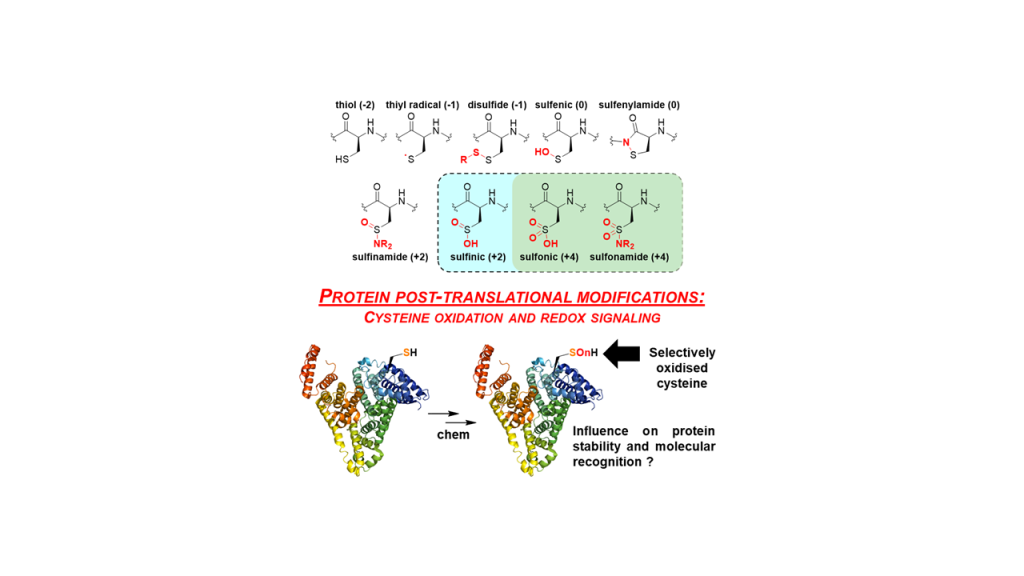Project No. 2405
STANDARD PROJECT
Primary Supervisor
Dr Matthias Baud – University of Southampton
Co-Supervisor(s)
Prof Louise Serpell – University of Sussex
Dr Sam Thompson – University of Southampton
Summary
Reactive oxygen species (ROS) are well-known for altering the oxidation level of cysteine (thiol vs sulfenic/sulfinic/sulfonic/etc…).
These oxidative post-translational modifications (“oxy-PTMs”) of cysteine have been implicated in diverse cellular processes and signalling cascades, but also in cellular aging and diseases resulting from protein misfolding and aggregation.
The challenge: to date, studying the properties and function of oxy-PTMs has proven very difficult, mainly due to the lack of methods to access sufficient amounts of pure modified peptides for in vitro studies, in turn hampering functional and structural characterisation.
This project is a fundamental study of cysteine oxy-PTMs and how these modifications impact the general properties of peptides/proteins, such as conformation and folding, molecular recognition, oligomeric states, solubility… and ultimately cellular function. The Baud/Thompson labs have recently developed new biochemical synthetic methods to introduce new cysteine PTMs site specifically in oligopeptides for in vitro studies (unpublished). This project builds on these findings and provide training in techniques at the interface of the biological, chemical, and physical sciences. In brief:
– Objective 1: is the design/preparation of peptide libraries containing Cys oxy-PTMs at specific sites using medium/high throughput “solid phase peptide synthesis” (SPPS), their purification and characterisation by chromatography and spectrometry. Techniques: SPPS, HPLC/UPLC, HRMS/MS.
– Objective 2: will study their in vitro properties, including their propensity to fold and/or aggregate into higher order structures, but also how they are recognised by particular cellular reductases. Techniques: CD, IM-MS, DLS, NMR, protein production, enzyme kinetics assays.
– Objective 3: will study the structure of oxi-PTMs and their trafficking in model cell lines. Techniques: cell culture, XRD, cell imaging.
Areas of impact: Protein folding, cellular redox signalling (a hot area), and understanding of diseases resulting from their misregulation (e.g. Parkinson, Alzheimer)
Profile: the candidate will have a suitable degree in biochemistry or chemistry.

